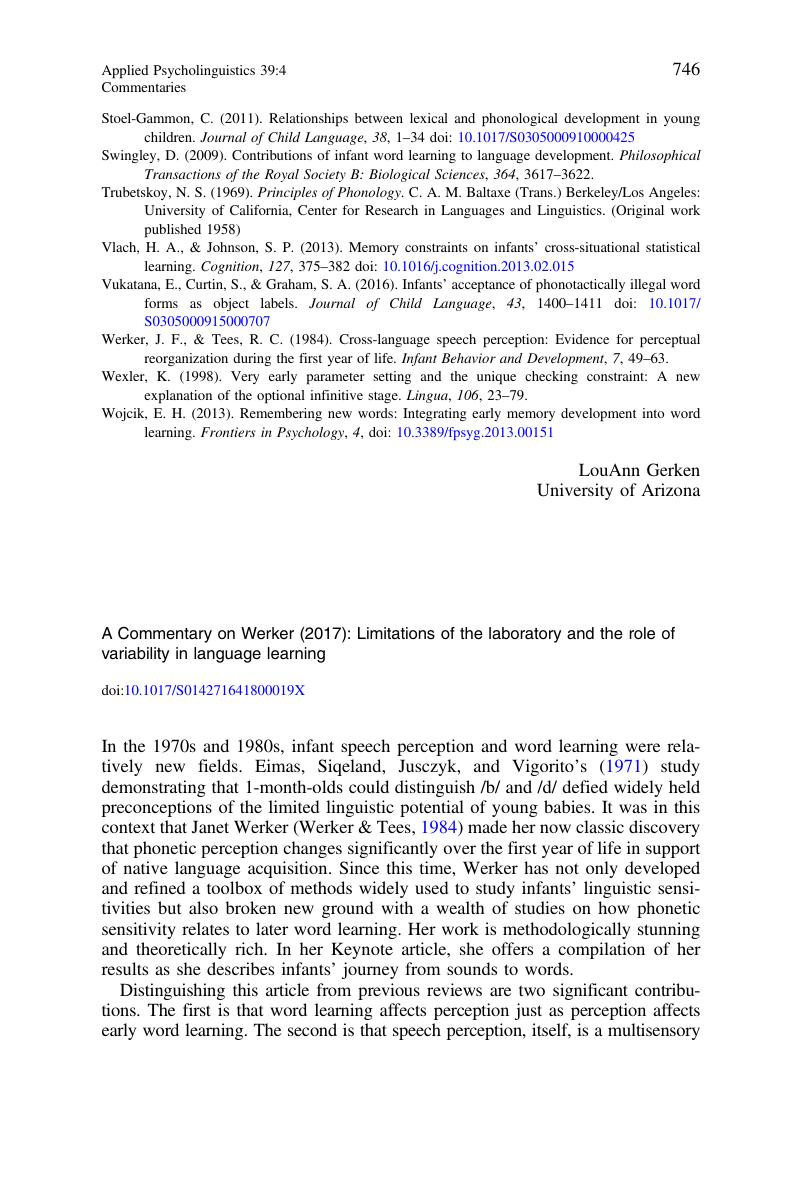Schvachkin, N. K. (
1973).
The development of phonemic speech perception in early childhood. In D. Ferguson & D. Slobin (Eds.),
Studies of child language development (pp.
91–
127).
New York:
Holt, Rinehart, and Winston. (Original work published 1948).
Google Scholar 